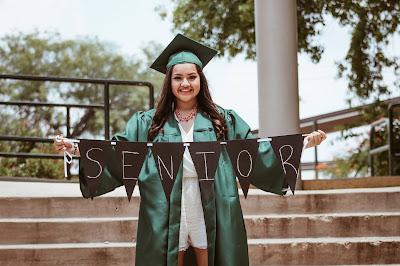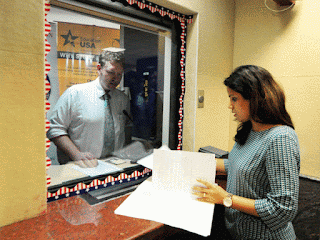How to study in the USA step-by-step (Part 2)
Step-by-step guide on how to study in the USA as an international student
How to study in the USA from Admission application to Graduation a.k.a A-Z information about F1 and M1 US student visa and studying in the USA
This is a second overview and a rephrase of the first article (Part 1). We added new information that any student who want to study in the USA must understand, including how to get your social security number (SSN) as an international student. At the moment, here's how to go from F1 student to Green card to Citizenship.
Before reading this second article, please do yourself a favor by reading the first article (Part 1) first, then come back and read this. It would make everything clearer to you. For the first article, see A-Z everything you need to know about F1 and M1 US student visa and studying in the USA.
This second part provided further information about every step in the study in the USA process- from researching a school, program or course, application, admission, traveling to USA, graduation and departing the USA.
(1). Get ready to study in the USA
If you want to study in the USA, the first step is to find the school or program that most interest you.
The US has several post-secondary school options for F1, M1, and J1 international students; including community colleges or undergraduate and graduate programs.
(2). Find a SEVP approved school online
SEVP approved schools means universities and colleges authorized to give admission to international students. See full list of US (SEVP) approved universities and colleges eligible to enroll international students
Not all schools in the USA can give admission to international students. Only SEVP approved schools are legally allowed to give admission to international students. SEVP is abbreviation for:- Student and Exchange Visitor Program.
Or use search engines such as google.com, yahoo.com, bing.com to find list of SEVP approved schools or the website of a school where you'll like to study. Make sure it's SEVP approved.
(3). Apply for admission to study in a US university or college
When you find a SEVP approved school from the above PDF or somewhere else offline, use google.com to find the website of the school. When you find the website of a school that interest you, all you have to do is find their admission page and apply for admission.
(4). Alternatively, use education USA
If you don't want to make the application directly to the school by yourself. Yes, it's allowed to apply through a third party at education USA. That's the US Department of State’s web page which helps international students learn about the types of education available in the USA. They also operate offline in many countries and they can help you find scholarship. For more information, search for the education USA office in your country.
Once you confirm that your school of choice is certified to accept international students, follow the instructions on the school’s website to apply for admission.
It is common for post-secondary schools in the USA to require standardized tests such as TOEFL, GRE, SAT, GMAT for admission. If you didn't take any standardized test, see recommended cheap US universities and colleges for international students. There you'll find list of SERV accredited schools that don't require standardized test before admission. However, some of them may still subject you to intensive English program when you get to the school. If you want to take the standardized test, see subsidized TOEFL, IELTS, GRE, GMAT, SAT examination books.
(5). Wait for your form I-20 to arrive
After the school offer you an admission, they'll send you by postal mail or courier a “Certificate of Eligibility for Nonimmigrant Student Status,” from your designated school official (DSO). This form is called the form i-20 in short.
The DSO's work is to help you understand and follow the rules for studying in the United States. Make sure you know your DSO and how to contact him/her. Its very important. Their job is to guide and advise you even when you get to the school.
The Form I-20 is an important document that you should keep safe, as you will need it throughout the international student process. You'll also need to present it at the point of entrance when you get to the airport in USA. You won't be allowed into the USA without presenting your form i-20 upon arrival.
(6). Pay for your I-901 SEVIS Fee
When you get your form i-20 by post or courier, the next step is to pay your I-901 SEVIS Fee. However, before payment, make sure to crosscheck the document to be sure that you received the right type of document (F1 or M1 or J1) and that your name and date of birth are correct and match the information in your passport.
The US government requires that all international students pay the SEVIS fee before getting a visa. Follow here to Pay your SEVIS fee.
If the above link doesn't work, then search google.com to find the latest way. After payment, print the receipt online or if you didn't pay online, then keep safe whatever receipt you were issued when you paid.
Remember to keep the SEVIS Fee payment receipt and be sure to check that the Student and Exchange Visitor Information System (SEVIS) identification (ID) number on the receipt matches the SEVIS ID number that appears on your Form I-20. Please contact SEVP if the SEVIS ID number on these two documents does not match, or if you encounter other issues in the process.
(7). Apply for your US student visa
After paying for the SEVIS fee, quickly apply for a visa at a U.S. embassy or consulate in your country. You can follow here to apply for US visa online.
If the above link doesn't work, then use google.com to find the latest way. Remember you can also apply offline is you're unable to do so online. Please contact the US embassy in your country for more information.
IMPORTANT: from the day you begin your quest to study in the USA, remember to also start preparing and practicing how to pass the US student visa interview. It's very important! Because even if you have enough money to study in the USA, you won't get visa to study in the USA unless you pass the US student visa interview. Follow here to download the complete US student visa interview questions and answers PDF. That's all you need to learn how to answer the US student visa interview questions correctly and get your student visa.
(8). Schedule your visa interview appointment
Follow here to choose a date for your visa interview.
If the above link doesn't work, then use google.com to find the latest way.
(9). Arrive at the US airport
You can only enter the USA within 30 days or less before your school's resumption date as listed on your Form i-20. Don't travel until it's at least 30 days before the beginning of your course or program. If you travel to the US earlier than that, you'll be deported.
When you arrive at the US port of entry, you will meet a U.S. Customs and Border Patrol (CBP) officer who has the authority to allow or deny your entrance into the USA. You must present the CBP officer with your Form I-20, as well as your valid visa and international passport. It is also a good idea to have your acceptance letter from your school, your evidence of financial support, and the name and telephone number of your DSO. Be sure to keep these documents and information in your carry-on luggage, as you will not be able to access any of your checked baggage until after you pass through the U.S. port of entry.
A CBP officer may direct you to secondary inspection and interview you further to determine if you may enter the USA. If you do not have all your documents or if the officer cannot verify your information, they may deny you entry into the country or issue you a Form I-515A, “Notice to Student or Exchange Visitor.” If you receive a Form I-515A, you must work with your DSO to respond to it within 30 days.
(10). Receive form i-94
If the CBP admits you into the country, they will give you an admission stamp in your passport and issue an electronic Form i-94, “Arrival and Departure Record.”
The Form i-94 includes information about when you were admitted, what status you must maintain (F1 or M1 or J1) and how long you can stay in the United States.
The CBP officer will inform you where to find your electronic Form i-94. You should verify that the “Admit Until” date on your Form I-94 and admissions stamp on your passport lists “D/S” (that means, Duration of Status) and not a specific date.
(11). Study
While studying in the USA, it is important to maintain your status which relates to the purpose you're in the USA.
As an F1 student your primary purpose for coming to the USA is to study. This means you must not take any action that detracts from fulfilling this purpose and follow the regulations associated with studying in the USA.
(12). Enroll in a Full Course of Study
The definition of a full course of study for an F1 student at a post-secondary school depends on the type of school you attend and the degree you seek.
F1 undergraduate students at a college or university must take at least 12 credit hours per term, while F1 undergraduate students at a conservatory or seminary and F1 graduate students must take a full course of study as certified by the institution.
If you are unsure if your class schedule meets the requirements for a full course of study, talk to your DSO. If meeting this full course load requirement is difficult for you, talk to your DSO immediately to discuss if you are eligible for a reduced course load. Learn more about this requirement by visiting the Full Course of Study page.
(13). Attend and Pass Your Classes
Attend all your classes, and make normal academic progress. Do not drop classes without first speaking with your DSO. If school is too difficult, speak with your DSO immediately to figure out your options. If you believe that you will be unable to complete your program by the end date listed on your Form I-20, talk with your DSO about requesting a possible program extension.
(14). Take An Annual Vacation
You are eligible to take an annual vacation after completing an academic year, and once every year after that if you maintain your status and register for classes in the academic term following your annual vacation.
Ask your DSO to learn when you are eligible for your annual vacation.
(15). Transfer to Another school
You may transfer to a new school if you decide that you would like to change to a new school.
You must apply and be accepted into another school before you begin the transfer process. If you want to transfer, talk with your DSO and follow the Instructions for Transferring to Another School as an F1 oR M1 student.
(16). Student Benefits
While studying in the USA, you can apply for certain benefits. These student benefits are not granted by SEVP and require students to apply to other U.S. government agencies to receive them.
(17). Apply for Driver’s License
Driving a car without a driver’s license is illegal, so get a driver's license is you want to drive. F1 or M1 or J1 students are eligible to apply for a license. To acquire a driver’s license, you must apply for one at your local Department of Motor Vehicles (DMV), which can have a different name in some states. For more information about this process, do speak with your DSO and follow the instruction.
(18). Work in the USA
You may apply for on-campus employment up to 30 days before the start of classes. To apply, talk to your DSO.
If approved, your DSO will provide you with a letter of approval, and you should ask for a similar document from your employer. If you participate in on-campus employment, you may not work more than 20 hours per week when school is in session. If you have additional questions, please visit ice.gov/sevp
Off-campus employment is work that takes place outside of a school campus. Off-campus employment is only available to you if you have completed at least one full academic year of your program of study and have an economic hardship that qualifies for the U.S. Department of Homeland Security’s emergency circumstances. To work off campus, you must receive approval from your DSO, obtain an updated Form i-20 and apply for and receive employment authorization from US Citizenship and Immigration Services (USCIS).
Additionally, some students who earn a degree from SEVP certified schools in science, technology, engineering, and mathematics (STEM) fields may apply for the STEM OPT extension after completing an initial period of post-completion OPT.
(20). Apply for Social Security Number (SSN)
All students who receive a wage from an employer, either by working or participating in a training opportunity, must apply for a Social Security number (SSN).
If you apply for an SSN for on-campus employment, you will need the approval letter from your DSO and a letter of approval from your employer. In all other instances, you will need your employment authorization document from USCIS.
For more information about this process, ask your DSO about obtaining Social Security Number (SSN). You may also get more information online.
However, if you receive non-wage income while in the United States (for example, scholarships, grants, interest on stocks, gambling/lottery winnings) you're not eligible for an SSN. In that case, you must apply for an Individual Taxpayer Identification Number.
(21). Change your status
If you want to change the purpose of your visit while you're in the USA, you (or in some cases, your employer) must file a request with USCIS on the appropriate form before your authorized stay expires.
USCIS recommends that you apply as soon as you determine that you need to change to a different non-immigrant category. If USCIS denies your application, be prepared to leave the USA when your current status expires.
(22). H-1 B and the Cap Gap Extension
If you are an F1 student seeking to switch nonimmigrant classification from F1 student status to H-1B temporary employment status after completing a program of study or post-completion OPT, ask your DSO about the cap gap extension.
The cap gap extension may allow you to extend your F1 status and/or authorized period of post-completion OPT until you transition to the H-1B status. This transition occurs on Oct. 1 each year. Additional information could be found on the H-1B and Cap Gap Extension page on the US government site.
(22). Depart from the USA
If you've maintained your status and finished a program of study or your authorized period of post-completion OPT, and you do not transfer to another school, you have a 60-day grace period to depart from the United States.
Failure to depart within this grace period could adversely impact your ability to re-enter the USA under a different non-immigrant or immigrant visa.
Find travel abroad eBooks at order Study abroad eBooks and B1/B2 visa eBooks
Online
(Part 1) A-Z information about F1 and M1 US student visa and studying in the USA













Comments
Post a Comment